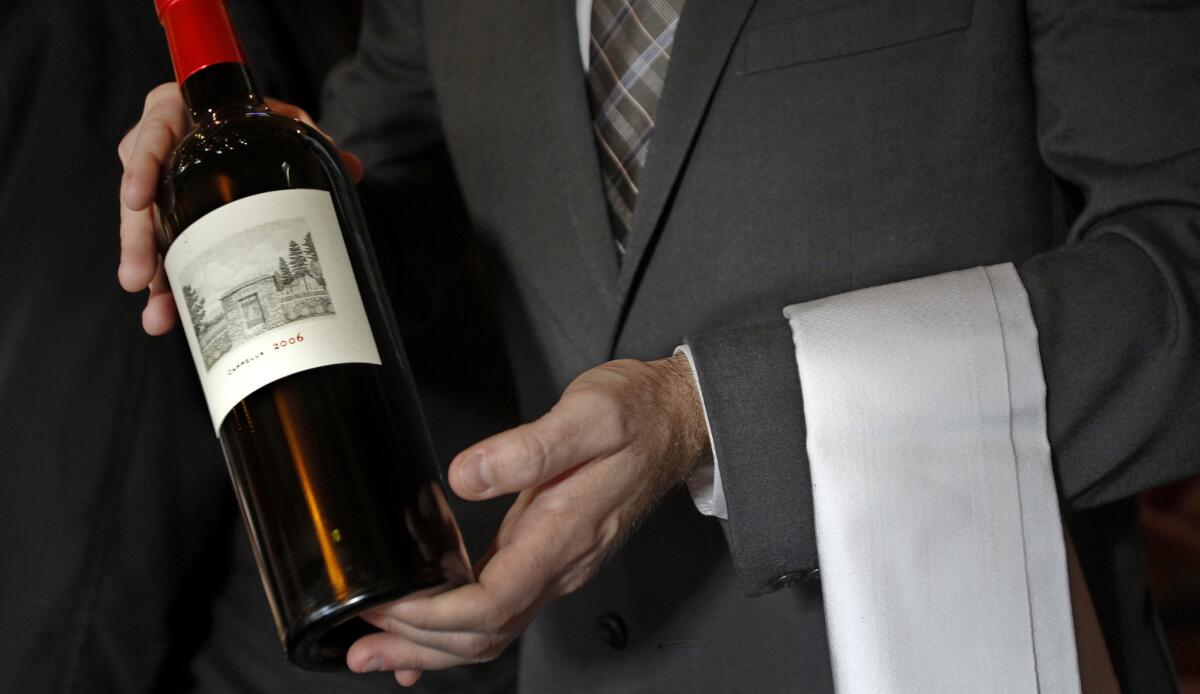Sommelier not required? The new WineGlass app could be a game changer

- Share via
A new iPhone app called WineGlass is poised to change the way wine drinkers order wine in restaurants. Partnering with CellarTracker, the online database of wine prices and opinions, WineGlass helps both the clueless and the semi-knowledgeable pick an appropriate wine.
No more calling a hotline or a savvy friend to ask, in a hushed voice, which white Burgundy you should order. All you have to do is make like a spy and photograph the wine list with your iPhone. WineGlass will provide crowd-sourced descriptions and assessments of almost every bottle, complete with a score on a 100-point system and the average range of prices for that wine in a restaurant.
The technology is pretty amazing. After paying iTunes $4.99, I downloaded the app, and after reading the simple instructions, I was ready to attack my first wine list. All I had on hand was the single sheet I’d slipped into my purse at Dockside in Playa del Rey the other night. I snapped a portion of the wine-by-the-glass list. A few seconds later, I was looking at a screen with each wine highlighted.
Tap a wine and a box comes up with the complete name, a star rating (actually a visual representation of the wine’s point score), a price range for that bottle in a restaurant and its score on the usual 100-point scale.
A 2013 Tatomer Grüner Veltliner from the Central Coast, for example, gets 91 points and a whopping four and half stars and should be priced anywhere from $48 to $60. (It is $14 by the glass at Dockside.) Described as a “pretty amazing gruner from CA ... very similar to Austrian wines ... loved it and can’t wait to drink another.” Yes, you do want to order it for your sand dabs.
The information comes from CellarTracker’s immense database, which includes more than 1.7 million wines and 4.7 million wine reviews from 307,000 users.
Many of the wines on Dockside’s list are fairly obscure, such as the Ettore Germano Lorenzino Dolcetto d’Alba from Piedmont, Italy. That bottling gets three stars and 87 points, should cost $43 to $54 and is described by one of eight reviewers as “Ruby red with light aromas of berries and spice.”
OK, let’s try another wine list, the largely Spanish list from the new Smoke Oil Salt in the old Angeli Caffé space. The 2006 Viña Cubillo, the basic Rioja from Lopez de Heredia, should cost between $51 and $64, according to the app. At the restaurant, it’s $78, which confirms what I noted when I was there: Markups tend to be high. But then, a little further down: The 2004 Viña Ardanza La Rioja Alta, which should cost $89 to $104, according to CellarTracker’s data, is just $80 -- so, a relative bargain.
You could spend hours going through a wine list, reading the comments and scores, checking the price against the average price range. And everyone else at your table would be saying, hurry up and order something.
Though the app’s technology is dazzling, it remains to be seen just how useful it really is. The suggestions for food pairings, such as “Fish, Italian and Seafood,” seem too general to be of much use. Most prices are going to fall within the suggested range. Points are a plus only if you’re someone who pays a great deal of attention to them.
And comments exerpted from CellarTracker users’ wine reviews range from flowery to accurate to terse. “Pale lemon color” doesn’t offer enough information -- why is that comment even included? -- but “the finish really lingers, with the tart fruit and acidity going on and on,” makes me want to order the 2013 Andre Felici Verdicchio die Castelli di Jesi Classico Superiore.
Still, I hate to say it, but all those aspiring sommeliers out there might want to rethink their career strategy.
Follow @sirenevirbila for more on food and wine
More to Read
Eat your way across L.A.
Get our weekly Tasting Notes newsletter for reviews, news and more.
You may occasionally receive promotional content from the Los Angeles Times.








